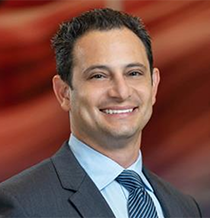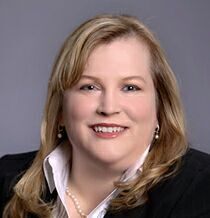The BLS Executive Council established the Financial Literacy Task Force to develop a strategy to
make financial literacy and education a high school requirement in Florida.
VISION AND MISSION
The Task Force’s vision is to ensure the financial well-being for all individuals and families in
Florida through financial education in high school and college. In furtherance of this vision, the
Task Force develops strategic direction for policymaking, legislation, awareness, and
coordination with stakeholders to ensure that all young individuals have the financial literacy to
make informed financial decisions during their adult lives through early financial education.
Defining Financial Literacy and Education
Financial literacy describes the skills, knowledge and tools that equip people to make individual
financial decisions and actions to attain their goals; this may also be known as financial
capability, especially when paired with access to financial products and services.
Financial education is the process by which people gain information, skills, confidence and
motivation to act, through various means, including classroom education, one-on-one
counseling and coaching, technology-based interventions, and self–study. 1
A key desired outcome for financial education is sustained financial well-being, in which people
can fully meet current and ongoing financial obligations, can feel secure in their financial future,
and are able to make choices that allow enjoyment of life. 2
Financial education is key to unlocking the foundations of economic opportunity and powering
a strong and resilient economy. Americans must acquire financial skills and knowledge to fully
participate in our dynamic economy.
In a 2018 study, only one-third of adults could answer at least four of five financial literacy
questions on fundamental concepts such as mortgages, interest rates, inflation, and risk. 3
Similarly, a 2018 assessment of 15-year-old students found that 16 percent were below a
proficient level of financial literacy, 22 percent demonstrated a basic level of financial literacy,
while 12 percent successfully demonstrated the highest level of financial skills assessed. 4
To close the gap, the Task Force strives to instill knowledge, skills, and confidence through
making financial literacy an educational requirement in Florida for young individuals, so that
they can make more informed financial decisions during their lifetime.
RESOURCES FOR TEACHERS
- Federal Reserve System’s Resources for Educators — A comprehensive collection of
curricula, guides, publications, classroom activities and adult learning materials covering
such topics as credit, consumer resources, money, and banking.
- In the Classroom Materials — Information from the Securities and Exchange Commission
including classroom resources, information on special professional development
opportunities and workshops for teachers, and a “Just for Teachers” section to help
teachers better plan their own financial futures.
- Teacher Online Resource Center — This site offers teachers resources from the FDIC and
CFPB to help teach children from pre-K through age 20 about money or other financial
topics. It includes the FDIC's Money Smart for Young People series that consists of four
free curriculums available for immediate download.
- Money Smart Train-the-Trainer Videos — On-line video-based training for educators on
using the Money Smart curriculum. The videos are available in English and Spanish.
- Understanding Taxes for Teachers — Special website from the IRS for teachers. This site
presents detailed lesson plans, downloadable activities, simulations, and resources for
teachers and students.
- High School Fed Challenge — A national academic competition that provides students
grades 9–12 the opportunity to study the U.S. economy through the lens of the U.S.
central bank. The program encourages students to learn more about economics and
about the Federal Reserve System’s Federal Open Market Committee, which is the
policymaking group that makes interest rate decisions to foster economic strength and
stability. From credit card interest rates to the price of a loaf of bread, the effects of
monetary policy, set by the Federal Reserve System, are felt in many aspects of our daily
lives. This site includes information for students as well as Teacher’s guide.
RESOURCES FOR KIDS, YOUTH, AND PARENTS
KIDS
PARENTS AND KIDS
- Information about Social Security — Here you will find what every kid and parent should
know about Social Security. This site provides materials for children and parents to learn
about Social Security and why it is important for families
HIGH SCHOOL YOUTH
- Learn More about Taxes — Whether you’re”on assignment” or just browsing the Web,
this set of 38 Understanding Taxes student lessons has something for everyone. Divided
into two content areas — the Hows of Taxes and the Whys of Taxes — The Hows of
Taxes shows you how to apply tax principles, while the Whys of Taxes explains tax
history and theory.
- MoneySmart Curriculum for Young Adults — A comprehensive financial education
curriculum to teach people ages 12-20 the basics of handling their money and finances,
including how to create positive relationships with financial institutions.
OTHER RESOURCES
1 U.S. Department of the Treasury, Federal Financial Literacy Reform: Coordinating and Improving Financial Literacy Efforts, July 2019, available at:
https://home.treasury.gov/system/files/136/FFLRCoordinatingImprovingFinancialLiteracyEfforts.pdf.
2 Consumer Financial Protection Bureau, Financial well-being: The goal of financial education, January 2015, available at: https://files. consumerfinance.gov/f/201501_cfpb_report_financial-well-being.pdf.
3 Lin, Judy T, Christopher Bumcrot, Tippy Ulicny, et al., The State of U.S. Financial Capability: The 2018 National Financial Capability Study, FINRA Investor Education Foundation, June 2019, available at:
https://www.usfinancialcapability.org/downloads/NFCS_2018_Report_Natl_Findings.pdf.
4 Organisation for Economic Co-operation and Development (OECD), PISA 2018 Results (Volume IV): Are Students Smart about Money? Programme for International Student Assessment, OECD Publishing, 2020, available at: http://www.oecd.org/pisa/publications/pisa-2018- results-volume-iv-48ebd1ba-en.htm.



